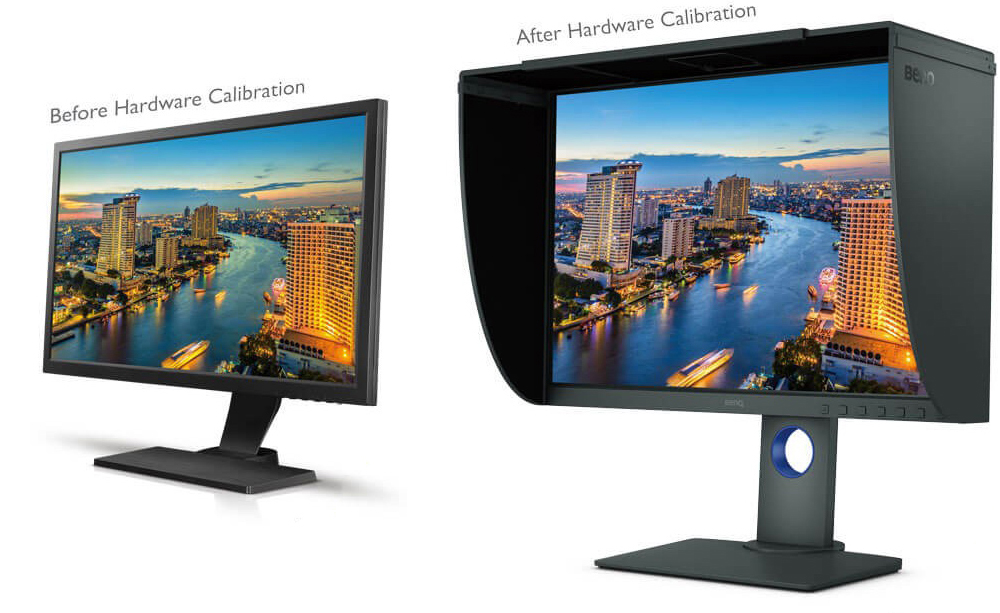can i edit 4k video on a 1080p monitor
Video-production monitors can offer a dazzling array of features with price tags running the gamut (no pun intended) from several hundred dollars all the way up to the price of a new car. So, while your budget will understandably be a primary consideration, what else should you look for in a monitor when setting up your editing system? Read on for some general factors to consider when choosing a video-editing monitor.
1. Screen Size
Look for a monitor large enough for comfortable, extended viewing during those day-long (or overnight!) editing sessions. Popular sizes include 19, 21.5, 24, 27, and 32" screens, with ultra-wide models also available. Larger, 40"+ monitors are an option if you have the room to accommodate their suitable viewing distances. If you plan on doing any work on set, a 19" monitor offers a good compromise between screen size and portability with plenty of travel cases to choose from.
2. Screen Resolution
If you're editing in 4K and you can swing the cost of a 4K or higher monitor, go for the higher resolution. On the other hand, if your existing editing system is 1080p-compatible and you're not ready to upgrade to the greater processing and storage requirements of 4K, you can edit your 4K footage using proxies while viewing on a 1080p monitor. Lower-res footage can be displayed on a higher-res monitor (although it will be in a smaller, "windowed" form) so if you want to upgrade your monitor to 4K first, you can. Of course, if you're color-grading in any significant way, you'll be better off opting for the 4K+ resolution.

3. Supported Video Resolutions
Most production monitors support a variety of input resolutions; it's when you're using formats on the higher or lower ends of the spectrum or less common frame rates that it's important to confirm compatibility. Resolutions like DCI 4K (4096 x 2160), standard-def NTSC or PAL for legacy projects, and frame rates like 1080PsF 23.98/24 fall into this category.
4. Panel Types
LCD monitors are widely used for editing and offer high-quality contrast ratios, brightness levels, and color-gamut compatibility. IPS (in-plane switching) LCD panels offer better viewing angles than their TN (twisted nematic) predecessors and support pro color spaces. OLED monitors offer wide viewing angles, high contrast ratios and brightness levels, and true blacks; they tend to be higher-priced than same-size LCDs.
5. HDR (High Dynamic Range) Support
HDR technology ups the color intensity and contrast of your images to a brilliant degree. Monitor brightness levels, expressed in cd/m2 (candelas per meter squared or nits), play a key role in HDR display; look for 1000 cd/m2 or higher for optimal HDR editing. HDR10 is the more common HDR standard with Dolby Vision or HDR10+ available in some monitors, look for the standard supported by your editing system.

6. Color Support: Gamut, Color Depth, Chroma Subsampling
Color gamut (color range) support is expressed in terms of the percentage the monitor covers. Wider gamuts such as Rec.2020, Adobe RGB, and DCI-P3 provide exponentially finer color detail than older standards like sRGB / Rec.709. Go for 10-bit color to maximize dynamic range, especially when working with log gamma footage. The deeper color depths provide more detail to manipulate to your liking in post-production, but remember that 10-bit color monitors require that your GPU, OS, etc. can handle the 10-bit stream. If you're a vlogger or show host who's simply trimming your clips and maybe making white-balance adjustments prior to posting on a social media platform, you may opt to stay with more affordable 8-bit color monitors.

7. Connectivity
What connections does your computer's video I/O card provide? Monitor input ports include HDMI, 12G/6G/3G-SDI (BNC), Thunderbolt™, DisplayPort, USB and optical variations; make sure your display is compatible with your system's video output. A loop-out port is a handy feature for feeding your signal to a larger monitor for director or client viewing during post-production. Select monitors offer audio I/O options that enable you to split out embedded audio to external speakers.

8. Dual Monitor Setup
Ensure that your computer incorporates a dedicated card to output your NLE system's color profiles if you opt to edit in one "window" and display a full-size playback in the other or if you're using one monitor for editing tracks and the other for color correcting.
9. Display Tools
LUT (lookup table) support enables you to view your log recordings without their characteristic flat look; select monitors can display side-by-side views of HDR and SDR (standard dynamic range) for comparison. Popular LUTs are come pre-loaded in some monitors and/or can be loaded in via an USB port or SD card slot. Standard display tools on many monitors include a vectorscope, histogram, exposure zebra, and frame markers.

10. Calibration
Last, but absolutely not least, create a routine for calibrating your monitor. This aligns it to an established standard and is essential for maintaining a consistent look in your project. Some monitors come with calibration software or can be adjusted by loading a calibration LUT. Your best bet might be a calibration program with a tethered probe since it can be used with multiple monitor models or, alternatively, you can hire a technician to do the first calibration and familiarize yourself with the process.

Although it may seem that monitor features are being continually updated, we hope the above tips form a basis for choosing your video editing monitor. For a more in-depth look at log-format recording check out this article by my colleague, David Adler. Seeing is believing—stop by the B&H Photo SuperStore to look at some monitors in person, and explore our wide selection on the B&H Photo website.
can i edit 4k video on a 1080p monitor
Source: https://www.bhphotovideo.com/explora/video/tips-and-solutions/10-factors-to-consider-when-selecting-a-monitor-for-video-editing#:~:text=Screen%20Resolution&text=On%20the%20other%20hand%2C%20if,viewing%20on%20a%201080p%20monitor.
Posted by: farrellwortur.blogspot.com

0 Response to "can i edit 4k video on a 1080p monitor"
Post a Comment